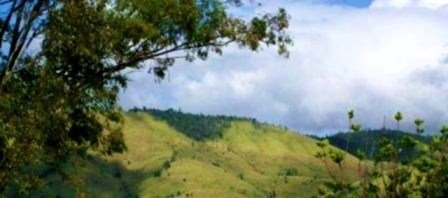
 Since the birth of Wikipedia, I have been using this application on a regular basis for fast and easy access to a bank of information. Until now I have not really thought about the Who, When and Why this was created. You too may be interested in these questions. Find out the answers by clicking the TED icon to watch a video of Jimmy Wales (the creator of Wikipedia) discuss the conception of his online encyclopedia.
Since the birth of Wikipedia, I have been using this application on a regular basis for fast and easy access to a bank of information. Until now I have not really thought about the Who, When and Why this was created. You too may be interested in these questions. Find out the answers by clicking the TED icon to watch a video of Jimmy Wales (the creator of Wikipedia) discuss the conception of his online encyclopedia.What I found really interesting was that I would jump on Widipedia at any time and not really comprehend the enormity of this Web 2.0 tool. Wikipedia is truly global and produced in many languages, with English only accounting for approximately one third of it usage (Wales, 2005).
Launched in 2001, by Jimmy Wales and Larry Sanger Wikipedia is the most popular general reference work on the Internet (Wikipedia, n.d.). The website is managed by a group of volunteers and the articles can be edited by anyone who can access the site. It is for this reason the information is regularly questioned and viewed as nonacademic and unverified.
Wikipedia is a Web 2.0 application. Web 2.0 is simply the second generation of Web development and design. The new Web boasts a rich user friendly interface through which interaction is possible, where as, the initial Web was essentially constructed of static sites which allowed little interaction. They were basically a viewing platform from which to read and gather information. Some other applications (Wikipedia, n.d.) with in Web 2.0 are:
- Wikipedia
- YouTube
- Myspace
- Blogs
- Wikis
- RSS
 This image was uploaded from Wikimedia Commons. After reading Tony's site I began more in depth investigations within Wikipedia and soon realised there are many more opportunities for classroom learning than first thought. Hopefully I have transformed into one of those "Smart Adults" (Prensky, 2001) who accepts that they don't know about the digital natives' world and will endeavour to take advatage of their knowledge, integrating it with modern technologies to provide and engaging and exciting learning environment.
This image was uploaded from Wikimedia Commons. After reading Tony's site I began more in depth investigations within Wikipedia and soon realised there are many more opportunities for classroom learning than first thought. Hopefully I have transformed into one of those "Smart Adults" (Prensky, 2001) who accepts that they don't know about the digital natives' world and will endeavour to take advatage of their knowledge, integrating it with modern technologies to provide and engaging and exciting learning environment.Wikimedia Commons is a great place to locate relevant pictures and drawings available for downloading. As my class has just finished several lessons about the life cycle of a flower, including ICT interactive activities, Their next step could be to gather their own research in groups of two, within Wikipedia, and using other integrated applications such as Wikimedia Commons, Wikispecies (to research animal life and insects whith a food web), and Wikibooks, which provide a link to Wikijunior (online books for Junior learners).
Tasks for Students:
- Collaborate with a partner to research 'The Life Cycle of Flowers' and 'Food Webs' using Wikpedia, Wikispecies and Wikibooks.
- Search Wikimedia Commons for relevant pictures to assist in construction of a food web.
- Construct the food web using ICT's. (using pictures, labels, and arrows)
- The web must include the initial flowing plant.
My most favourable aspect of Wikipedia is that all research can be done from one site. Links are provided for further understanding of terms and extra research gathering. Students are also able to use these Web 2.0 applications at home to complete homework activities and the extension of research.
References
Prensky, M., (2001). Digital Natives, Digital Immigrants. Retrieved July 18, 2009, from:
http://www.marcprensky.com/writing/Prensky%20-%20Digital%20Natives,%20Digital%20Immigrants%20-%20Part1.pdf
Wales, J., (2005). The Birth of Wikipedia. Retrieved 18 August, 2009, from:
http://www.ted.com/index.php/talks/jimmy_wales_on_the_birth_of_wikipedia.html
Wikipedia, (n.d.). About Wikipedia. Retrieved 18 August, 2009, from:
http://en.wikipedia.org/wiki/Wikipedia
Wikipedia, (n.d.). Web 2.0. Retrieved 18 August, 2009, from:
http://en.wikipedia.org/wiki/Web_2.0







No comments:
Post a Comment